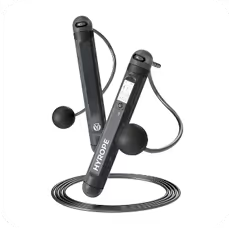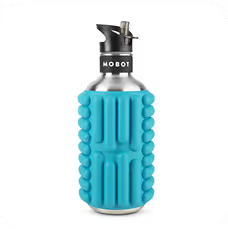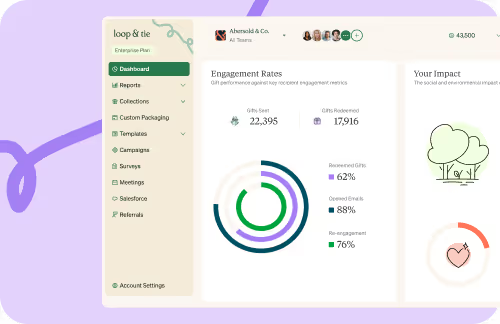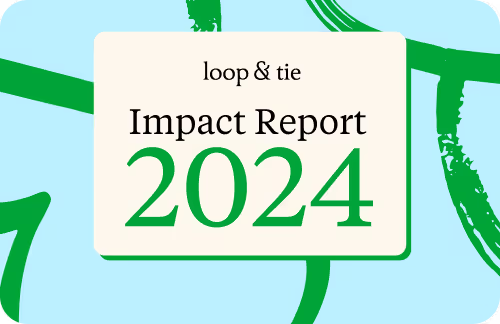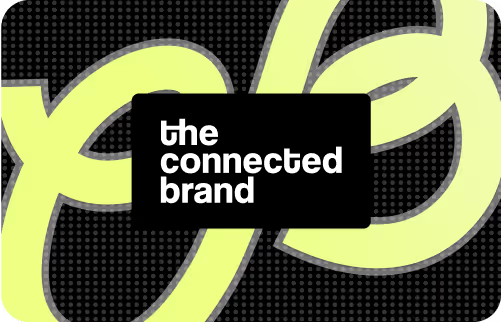Webinar | How Loop & Tie Surveys Drive Retention & Engagement
Employee satisfaction isn’t just a perk—it’s a key driver of retention, engagement, and overall company success. That’s why we hosted Unlocking Employee Satisfaction: How Surveys Drive Retention & Engagement, a webinar focused on using employee feedback to create a workplace where people feel valued and motivated.
In this session, we explored how well-designed surveys can help companies uncover what truly matters to their teams, leading to more meaningful engagement and long-term retention. We also shared best practices for gathering, analyzing, and acting on employee feedback to foster a culture of connection and support.
If you’re looking to strengthen your workforce and build a more engaged team, this webinar is for you.
Below, you’ll find the full video recording along with a transcript, so you can revisit the insights and start unlocking employee satisfaction. Let’s dive in!
Want to download our Top 20 Employee Survey Questions? Click here.
Transcript:
Hey there, friends. Thank you so much for joining us today here on our webinar about how to unlock employee satisfaction. You know, the key to driving successful retention to successful engagement with your employees is all about the questions you're asking them to reveal the insights for ways your businesses can make improvements in the experiences that they have. So I am MK Gettler. I am the chief marketing officer here at Loop and Tie, and I'm excited to talk with you about a topic I'm particularly passionate about, how we can build better connections with our employees.
To give you a lay of the land of what we're up to today, first thing we're gonna talk about is the power of employee surveys, what we unleash for not just the individuals at your organization, but for the success of your organization as well. We're gonna talk about best practices for meaningful feedback and even show you how you can use surveys alongside your gift experiences, to be able to build better feedback mechanisms to understand what matters most to your employees.
After that, it's really important. The and perhaps the most important part of building effective employee surveying is what you do with the data from the surveys themselves. So we'll talk a little bit about more about how to turn those insights into action.
Now if you're familiar with Loop and Tie, you probably know that connection is at the core of everything we do. We are here to help you build deeper connections with the folks that help you run, grow, scale your businesses.
Now there are two very important people that you spend a lot of time connecting with. The first of which are your customers. You spend a lot of time thinking about how are ways in which I can improve the holistic customer experience, but you're also spending time thinking about ways in which you could improve the employee experience. Now you know, as well as I do, the stats that are out there about how to improve the employee experience, more importantly, why improving that experience even matters.
These stats have been everywhere. And in fact, at this point in time, if this is the first time you're seeing this, we should hang out more often because we at Loop and Tire are talking about all of this all of the time. So some callouts here that when you measure the impact of your employee connection, you see tangible business results, including, you know, maybe eighteen percent higher in sales or, you might actually see a twenty three percent difference in the overall profitability. Or even better, the more your employees are engaged, the more your customers are engaged as well too. So we understand why building better connection with your employees matters. Now let's talk a little bit more about how you can build better experiences.
Everything comes down to surveying to understand the pulse, the heartbeat of what's happening with your employee culture.
So surveys help you unlock that potential of your employee connection strategy from things like helping you gain insights into how your employees are feeling, about things like maybe the environment, your culture, your leadership, your community, your communication styles. These are all important things that help your employees feel more connected.
It also gives you a chance to foster open and honest dialogue with your employees so that you can be able to build more trust and, of course, reinforce a culture of transparency and, more importantly, belonging.
And, of course, surveying helps you understand how to make impact and quickly, not just impact that might take six, nine, twelve months down the road for you to start to implement, but immediate impact to make your employees feel seen, heard, and valued.
With all of that said, that's the most important part of what we can do with our serving. Because when your employees feel valued, they're more in, like, more likely to engage authentically and share honest feedback, which is why we know that using surveys in the process of sending gifts is the perfect time in the employee life cycle to capture feedback. Because what better moment than receiving a gift from your employer for your one year anniversary, for example, than you're feeling valued.
And you can get that honest, authentic feedback from your employee at that point in time.
So if you think about measuring the qualitative and the quantitative of your employee connections, what you're really doing, especially if you're leveraging surveying through gifting, is being able to get your employee sentiment analysis. Understand things like, you know, how are our employees feeling right now through maybe net promoter scores or general, surveying.
You also can get engagement insights through your gifts as well too. You might know things like how many employees are redeeming their gifts or maybe even opening the gifts that you're sending them. These are metrics that help you understand how engaged and how valued your employees feel by your organization.
And last but certainly not least, the data that you get about what your employees are redeeming in their gifts is giving you what we call the personal preference intelligence. Meaning, if you find that your employees are redeeming a large number of, I don't know, let's say plants, you might have a bunch of green thumbs in your organization, which is a perfect reason to start building employee resource groups around common interests that folks have so they, in turn, can build deeper connections with themselves. With that, I think connections with themselves. With that, I think it's time for us to spend some time understanding actually how the surveys tool works. So what I'd like to do is actually go ahead and share another screen of mine so that we can take a look at how Eye uses surveys in the employee experience to be able to give you better insights into your employee satisfaction.
So I'm gonna jump right now into Loopint Eye. And if you're not familiar with Loopint Eye, would love to give you a quick tour. What we're looking at now is the Loop and Tie dashboard. This is where you can send gifts to all of the people that matter most to your organization, individuals that you wanna spend time deeply connecting with.
On your dashboard, you'll notice on the left side navigation here is the menu for surveys. Now if you don't see it in your portal, it's likely because your particular subscription to Loopintai does not have surveys unlocked. If that's the case, you can go ahead and remedy that by clicking this little carrot, going over to billing, and managing your subscription to upgrade so that you have access to surveys.
Now once you have surveys, what you'll do is be prompted to create a new survey. And let's say we wanna talk about our employee satisfaction survey.
Great.
You'll name your survey, create that survey, and what you'll be able to do with that survey now is to add survey questions. So down here at the corner, you have a little button that says add question, and you're given the option to add in different types of questions here. First thing you wanna understand with the survey questions that you're asking is the type of answers or responses you want to receive. So you have the ability to add yes or no questions. This is a very simple binary style question.
You can give a scale or in other words, a gradient so someone can give you a one to five star rating.
You can ask open ended questions and leave open text fields for folks to write in answers, or you can give multiple choice questions.
In this case, I think we should do just a very standard net promoter score style quiz where we can give folks a answer of, zero to ten, let's say, for example.
So with that, let's say, how satisfied are you with your current role?
And now we have to add in an option. So option one, zero would be the least satisfied all the way up to let's do up to ten so we give folks or up to five so that we can kind of split the difference here. There we go. Five.
Once that's done, we can either end on this question or we could ask an additional question, which maybe we might wanna ask an open ended question is, please provide more insights into, oop, your response. Oh, man. Fat fingers today.
And maybe this time, we'll leave it into an open text field for this one. So we'll leave text. Great.
Now that we have our questions added, we'll click preview, and we'll take a quick peek at what this interface looks like for gift recipients. So when you look at the relaxed that maybe someone wants to choose the, relaxed travel diffuser, before they can redeem their gift, they have they're been they're giving these options. How satisfied are you with the current role, four through five, where they can use the radio select to choose their answer, and then also provide more detail for that question.
To ultimately redeem their gift, they'll then click next, and they're on their way to getting that gift sent straight to their doorstep.
So that is the long and the short of how you get a survey created inside of your loop and tie gift experience.
To add that to a particular gift experience, you'll go through the entire process of sending a gift. And in the second to last step, you'll see the ability to add this survey to your gift redemption.
It's as simple as that. Adding a survey is a very simple task for your gift experiences.
And for us, we think it's a huge opportunity for you to build better connection with your employees.
But the only way that you're gonna build better connection with your employees is if you take the time to do something meaningful and impactful with the results that you get from your gifting. So let's dive back in and talk a little bit more about how we are going to make the data that you're collecting impactful.
So first things first, it really is important what questions you ask to get good answers back from your employee base.
These are our top five questions to ask. But for everybody who joined today or anybody who's watching this webinar, we will give you the ability to download our top twenty questions to ask for employee engagement.
Our top five favorites are something a lot like this. On a scale of one to ten, how satisfied are you with your job? Very similar to the question I just built for you in Loop and Tie.
Number two, how often do you feel excited about your work? This is a great opportunity for you to show how motivated and inspired your employees are at the work that they're doing day to day.
Of course, a very standard question in the scale of one to ten, but how valued and appreciated do you feel for your contributions?
Remember, we've already talked about how valued employees, one, make for much more engaged employees, and two, help you get better, more authentic feedback in the surveying that you've done.
Of course, number four, how comfortable do you feel sharing your ideas and opinions at work? We love this question at Loop and Tie because somebody's level of comfortability with giving you innovative and creative new ideas is the through the lifeblood of any thriving organization. You want your employees to feel empowered, to feel like they are a mini CEO, to be able to help bring ideas and inspiration to the table to help drive your business's growth.
And question number five that we love is what is one thing we could do to improve your work experience?
This open ended question is extremely revealing. It can tell you all about what employees value so that they know so you know what tools to give them to improve the quality and, more importantly, also the quantity of the work that they're doing on a daily basis.
Now these are just some of our favorite questions. And I mentioned, we have fifteen other of our favorite questions to share with you. You can download those right after this webinar. Or if you're reading this blog post and you're watching this video later on, you can download that resource directly below this video.
Now the thing that matters most to me when it comes to employee survey isn't just the art of asking questions.
It's more about the action that follows once you've gathered data and intelligence from your employees.
It's one thing to ask questions. You can ask questions all day every day. But if you don't uphold your end of the bargain by taking this feedback and turning it into something impactful and meaningful your for your employees, you are quickly eroding trust. And when you erode trust, you start to completely dismantle the connection you have with your employees and, in turn, your employees have with you, with your company.
So let's talk a little bit more about how we can turn the insights you gather from your employee surveys into action.
So the first thing you're gonna wanna do is analyze the data and, of course, find meaning, extrapolate the meaning from the data. Our biggest suggestions are to look for patterns and trends, understanding other themes that are starting to emerge and what folks are giving us insight into.
Also, spend some time thinking about segmentation in your results.
Take a look at your different levels of leadership within your organization.
Take a closer look at people's lifetime with you. How long have they been an employee with you? And use that to help you understand.
Seems like our employees around, you know, their first year are feeling excited, but feeling like they don't know where their career is going with us. Maybe we should invest in some, ongoing education and development for them.
And, of course, make sure you are surveying constantly enough so that you can start benchmarking and tracking your performance over time. Benchmarks really help you understand how you can refine and define success of all of your employee engagement strategies.
We like to think about sending poll surveys, and poll surveys are not meant to be very time intensive surveys, very quick, short, and sweet surveys. Every three to six months, maybe to track improvements.
Some organizations will do it once a year, which is a perfectly fine number of times of years to send out the survey.
Our only caution with that is that sometimes lots of things can happen. We've seen the world has changed very quickly in very short periods of time. So by changing that from once a year to maybe twice a year, that helps you understand what's happening throughout the course of the year so you can intervene and start building better programs.
With that said, programs.
Make sure if you are launching programs, you're identifying quick wins and, of course, long term fixes.
By balancing both the things you can do here now with the things that you can do long term, you have the immediate response so that you can earn the trust of your employees by giving you direct feedback.
With that, they feel like you're they're valuable. Their feedback is being taken seriously.
And with that, they're able to actually be a solution architect, not just for the experience of the for themselves, but for their colleagues as well. So small changes can make a big difference. For example, if your employees feel undervalued or underrecognized, maybe it's time for you to build a peer to peer gift program where folks can send gifts to one another on the fly after an employee has gone above and beyond to help support their teammate.
And, of course, once you've built those quick wins in, keep your eyes on the horizon for the long term improvements you can be making.
There could be deeper themes that you're noticing in the culture, things like, you know, development opportunities as I mentioned, or maybe leadership isn't as transparent as they once were.
Companies change. Organizations change. Maybe there's a better way for you to help reveal the veil and have better, more transparent conversations with your executive team. And, of course, not all requests can be made possible. You're not genies.
Not everything not every wish is your command. So if you cannot respond to the feedback that your team has given to you, especially if you're seeing it in large swats, explain why. Just give the context and insight to your team to help them understand why this might not be feasible at this time.
When you don't have answers, that is a really important point in time where trust is eroded.
So just be open and honest and help reveal why maybe you might not be able to do something right now to remedy a situation that someone has surfaced, but give alternative solutions in the long run.
With that too, I love building an employee engagement road map. Again, Rome wasn't built in a day. We need to spend time finding critical milestones along the way that we want to fix and remedy.
And if we try to fix everything everywhere all at once, we might end up completely undermining the things that were working really well for our culture. It can cause confusion. It could even cause some frustration because there are too many things coming at your team all at once. So spend time focusing and prioritizing the issues that are coming through with your employee surveys.
And, of course, once you start to have that level of prioritization and the hierarchy of needs for your team, start to assign executive leadership and oversight onto these prioritizations. And, of course, don't make decisions in a echo chamber of leaders.
Involve the members of your team who are most going to influence the culture and the dynamics of your con of your company.
Make sure you're keeping the employees who have been long standing cultural ambassadors or even are new and emerging leaders within your organization to help be stewards of the impact you're trying to make along the road.
And, of course, one of the most important components of building trust with your employees is to have effective communication strategies with them. So make sure that at your quarterly or even semiannual all hands meetings, you are spending time talking about the feedback that you got in your surveys, the progress that you're setting out to accomplish, and the key milestones that lie in between between so that folks understand what you're prioritizing, why you're prioritizing it, and more importantly, how it's going to impact their quality of life at your organization.
And, again, the most important incentive to any employee engagement road map is ongoing reinforcement, positive reinforcement that is. So if you do start to see improvements in team dynamic and culture or you see more folks are feeling more connected with one another, take that time to highlight those moments and share those employee testimonials when folks are starting to feel really rewarded by the programs that you're implementing.
Okay.
So we've covered a lot of territory in twenty three minutes. So with that in mind, I know we have some questions, online right now. So please drop some in the comments below in the, chat feature over here. Or if you have more questions that you wanna answer one on one, our team is available to chat with you to engineer the ideal employee engagement strategy with your surveying tools.
With that, thank you so much for joining me on today's live webinar to be able to help you unlock your employee satisfaction.
Again, I'm MK Gettler, the chief marketing officer here at Loop and Tie. And I love building incredible employee experience, ones that are steeped in connection, trust, and authenticity.
Come find me on LinkedIn, or come hang out with us here at Loop and Tie. We're always here to try to help you make better connections with the folks that you are doing business with.
Read our 2024
Impact Report

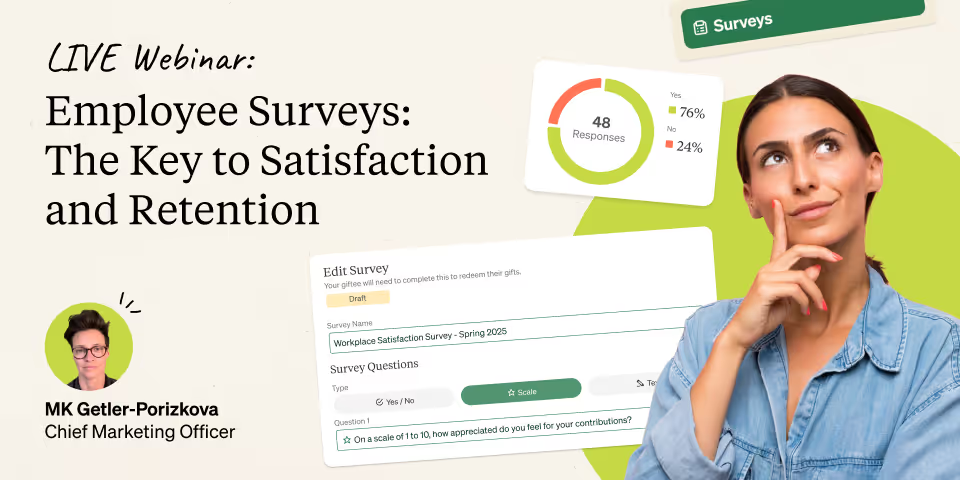





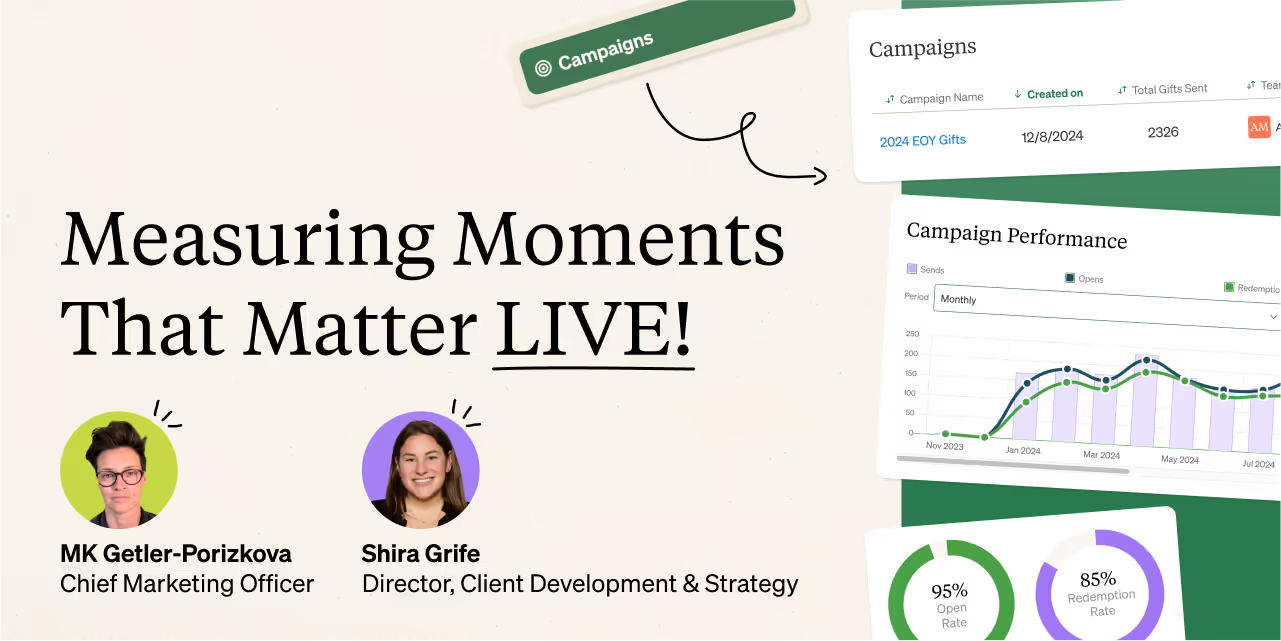

.webp)






